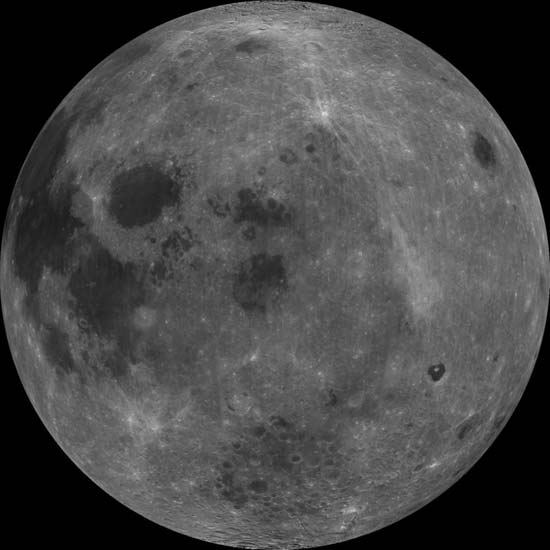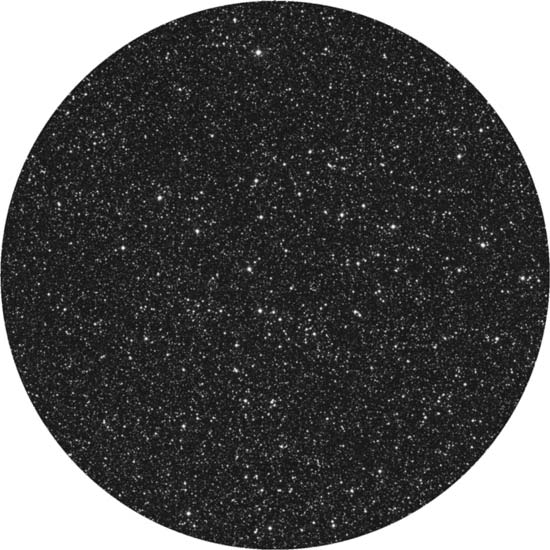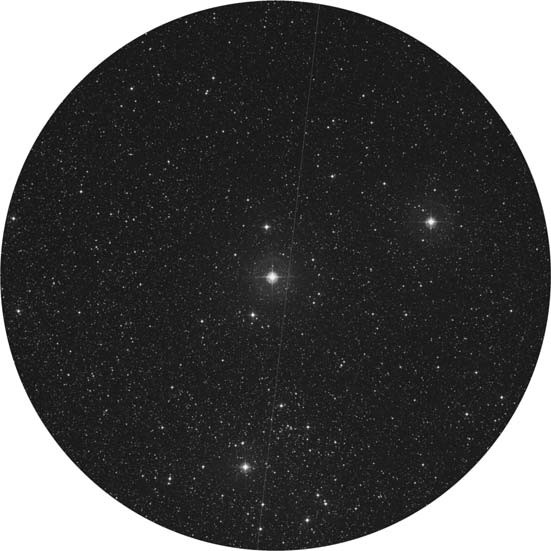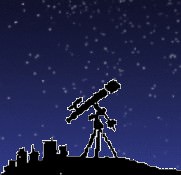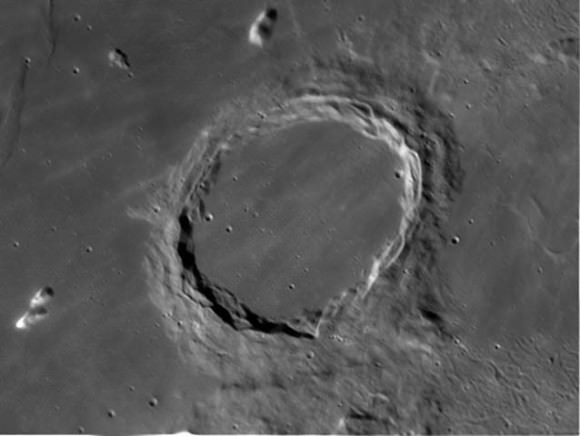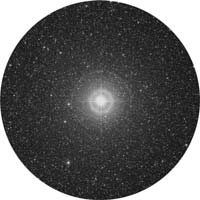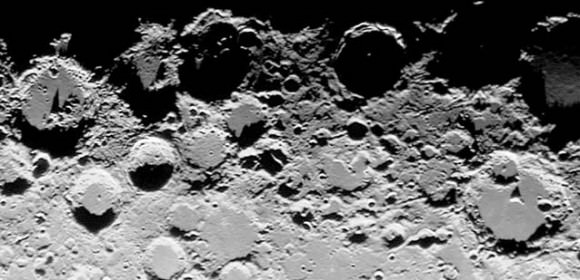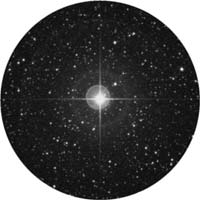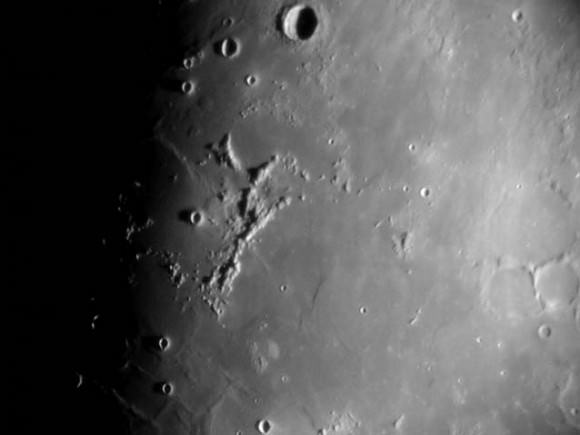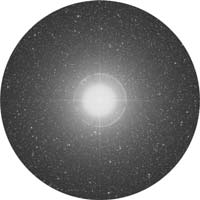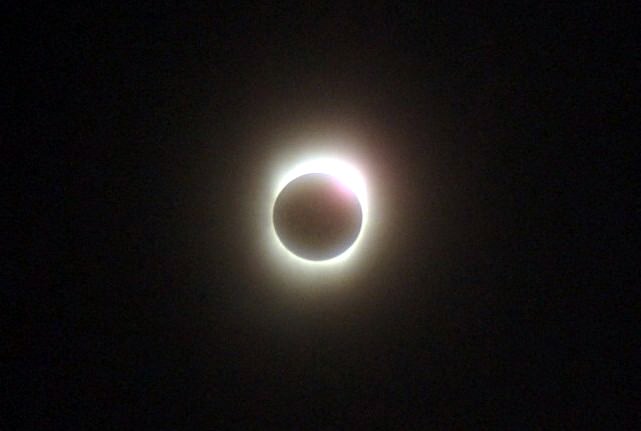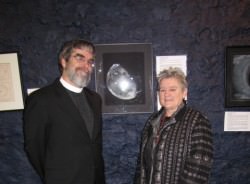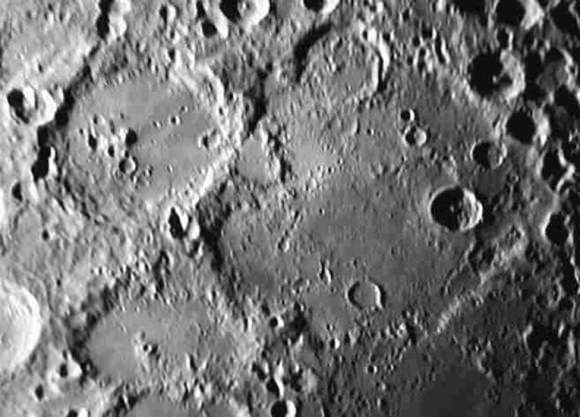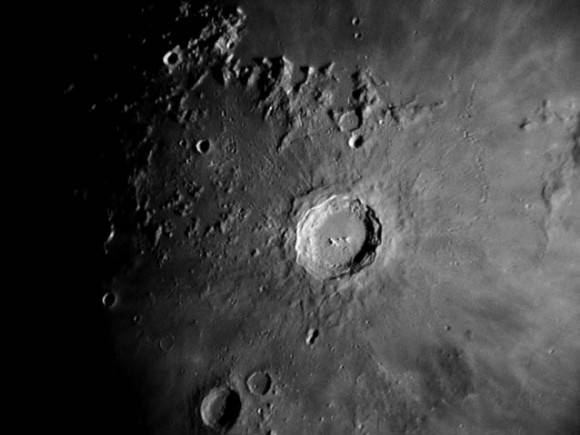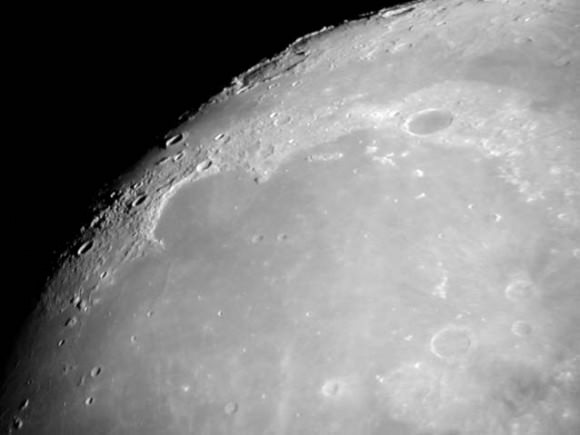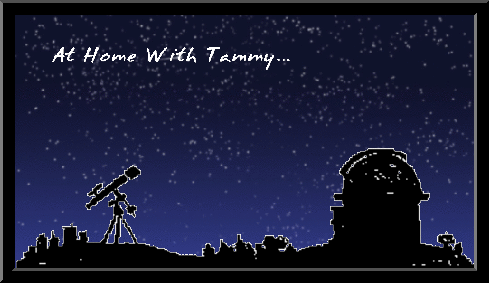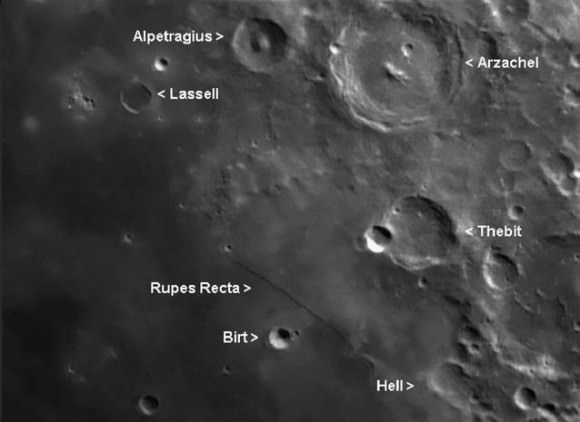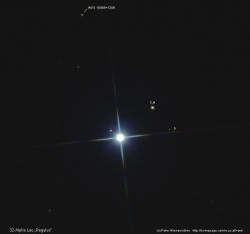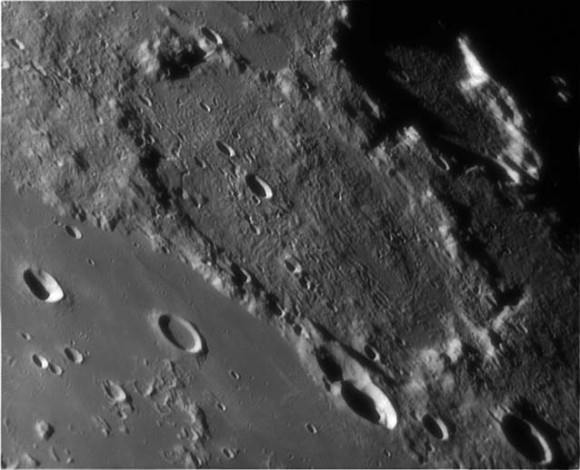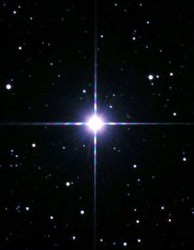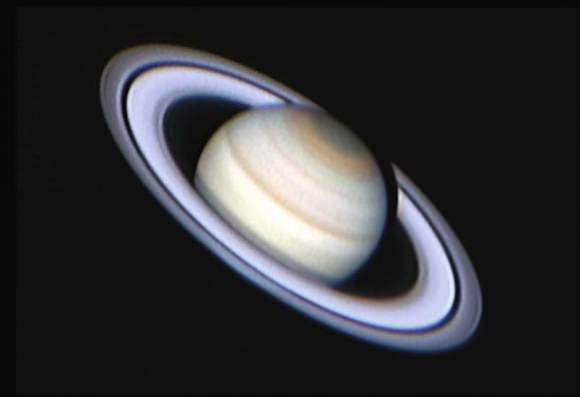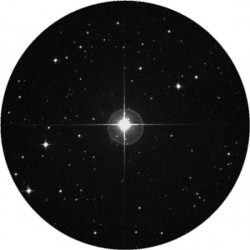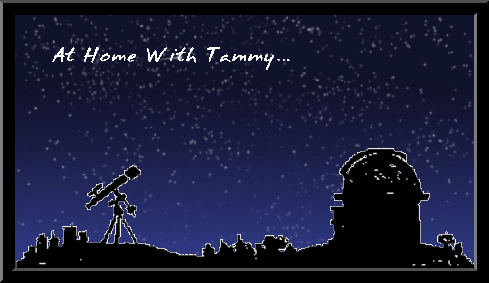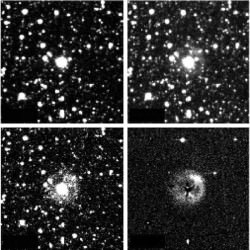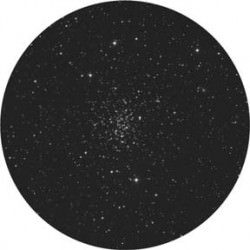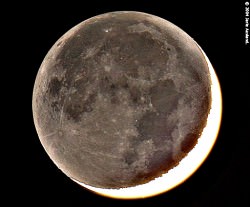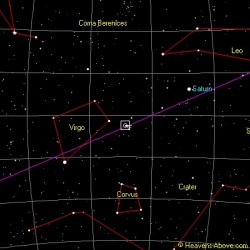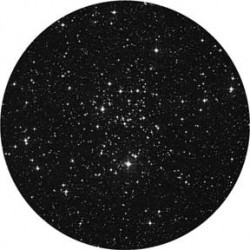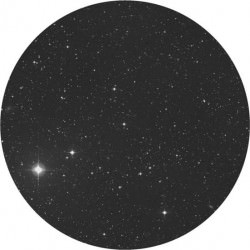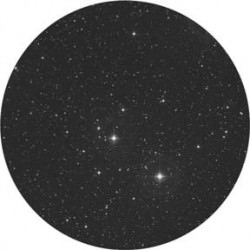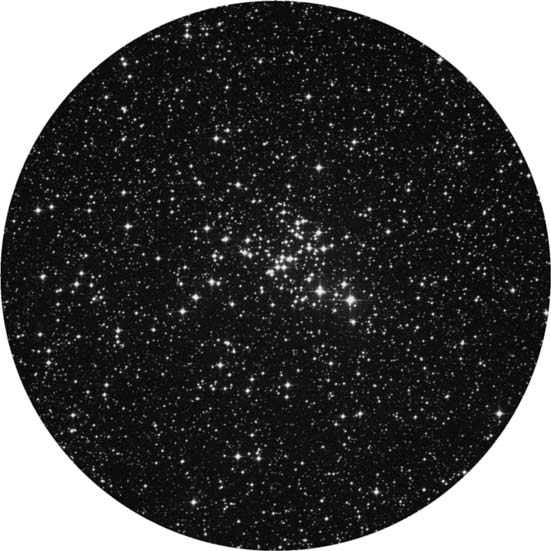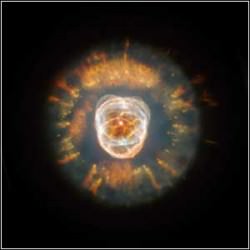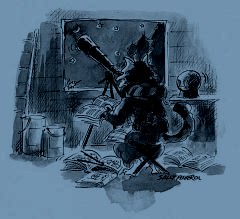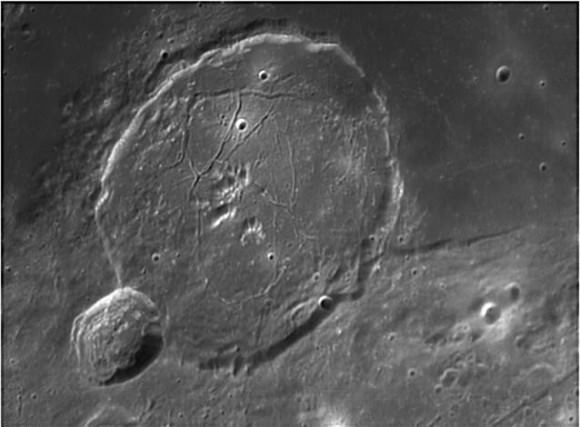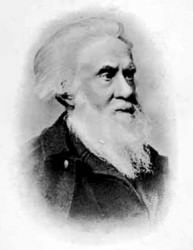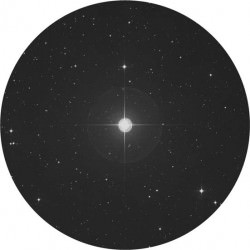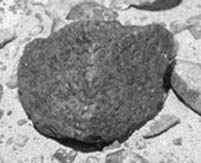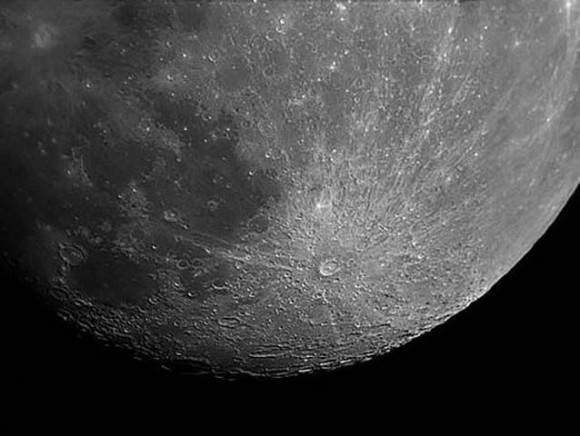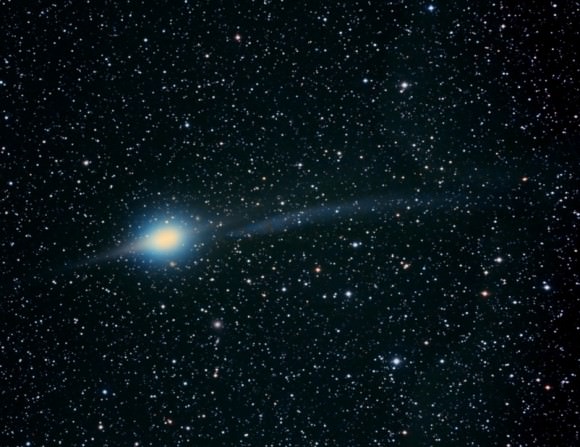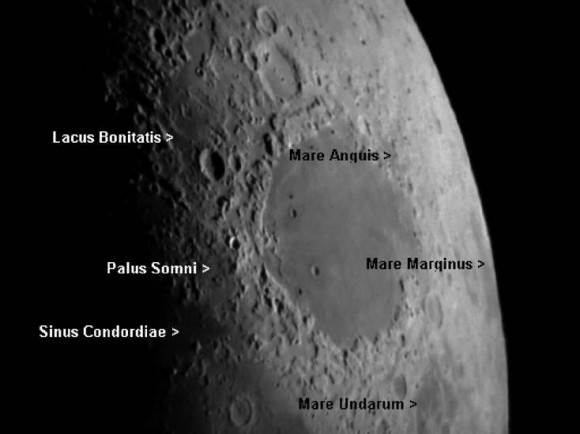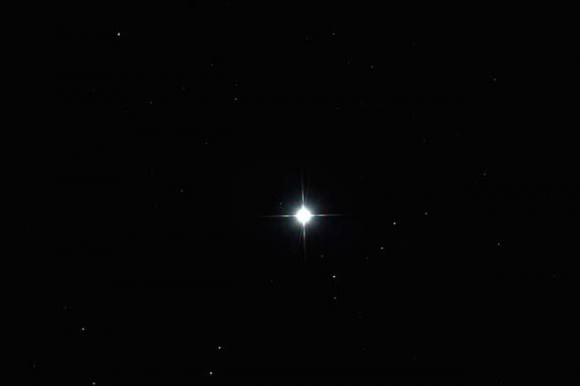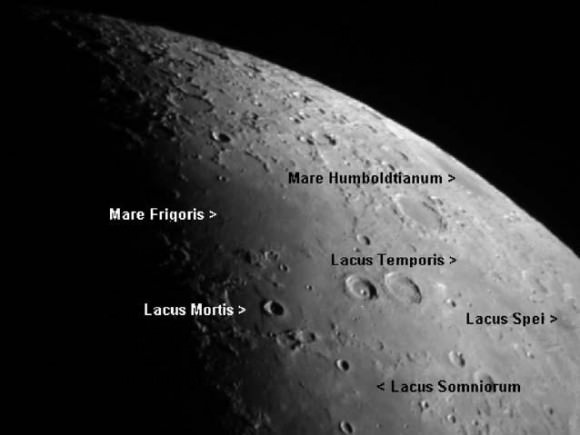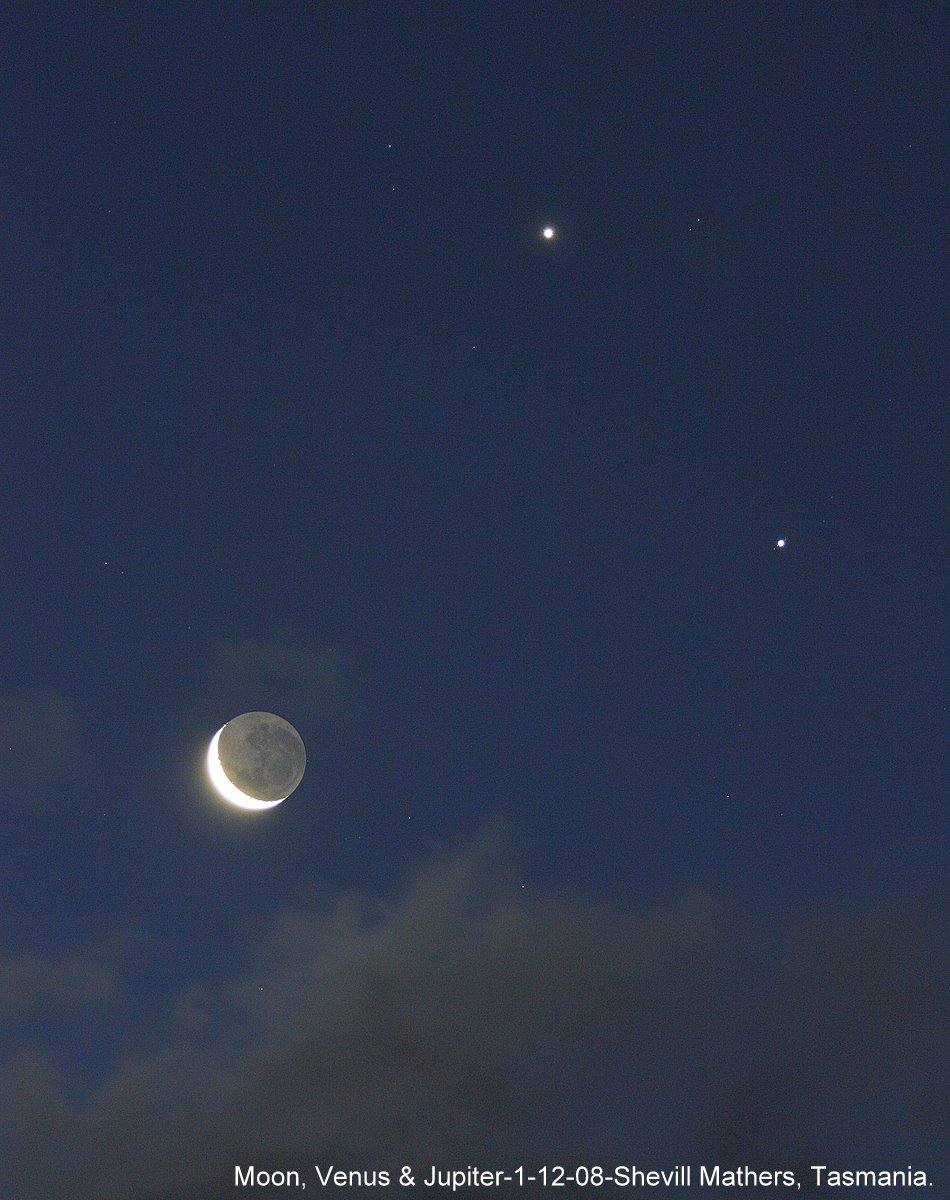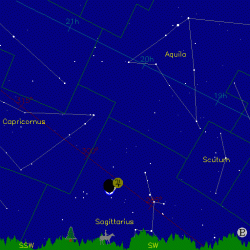Greetings, fellow SkyWatchers! Ah, yes… Full Moon. Are you ready to howl? If you didn’t get a chance to watch the galiean moons do their dance last weekend, then be sure to catch the awesome video you’ll find inside! In the meantime, keep your ears alert for the rise of tonight’s “Full Corn Moon” and check out the Omicron gems. As the skies get darker, the Herschel challenges warm up – so dust off your optics and I’ll see you in the backyard…
Friday, September 4, 2009 – It’s a Full Moon tonight. Many cultures refer to this one in particular as the ‘‘Corn Moon,’’ because at this time of year most corn crops are ready for harvest. Tonight let’s harvest some bright lunar features as we trace the ray system of Tycho in the lunar south. Look for the bright points of Kepler and Aristarchus in the northwest quadrant. In the east, dazzling crater Proclus will light up the western shore of Mare Crisium. Just north of central, look for the two bright rings of Manlius and Menelaus.
Although the Moon will dominate tonight’s sky, we can still take a very unusual and beautiful journey to a bright and very colorful pair of stars known as Omicron 1 Cygni. Easily located about halfway between Alpha (Deneb) and Delta on the western side (RA 20 13 28 Dec +46 46 40), this is a pure delight in binoculars or any size telescope.
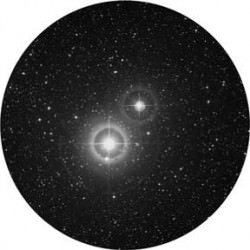 The striking gold color of 3.7-magnitude Omi 1 A is easily highlighted against the blue of its same-field companion, 5th magnitude Omi 1 B. Although this wide pairing is only an optical one, the K-type giant (A) is indeed a double star—an eclipsing variable about 150 times larger than or own Sun—and is surrounded by a gaseous corona more than double the size of the star itself. If you are using a scope, you can easily spot its blue tinted, 7th magnitude companion star about one-third the distance between the two giants. Although our true pair is some 2 billion kilometers apart, they are oriented nearly edge-on from our point of view, allowing the smaller star to be totally eclipsed during each revolution. This total eclipse lasts for 63 days and happens about every 10.4 years, but don’t stay up too late. . . We still have years to wait!
The striking gold color of 3.7-magnitude Omi 1 A is easily highlighted against the blue of its same-field companion, 5th magnitude Omi 1 B. Although this wide pairing is only an optical one, the K-type giant (A) is indeed a double star—an eclipsing variable about 150 times larger than or own Sun—and is surrounded by a gaseous corona more than double the size of the star itself. If you are using a scope, you can easily spot its blue tinted, 7th magnitude companion star about one-third the distance between the two giants. Although our true pair is some 2 billion kilometers apart, they are oriented nearly edge-on from our point of view, allowing the smaller star to be totally eclipsed during each revolution. This total eclipse lasts for 63 days and happens about every 10.4 years, but don’t stay up too late. . . We still have years to wait!
Saturday, September 5, 2009 – Tonight before the Moon commands the sky, let’s start with the brightest star in Vulpecula—Alpha. Although it is not a true binary star, it is quite attractive in the telescope, and an easy split for binoculars. Alpha itself is a 4.4-magnitude red giant, which makes a nice color contrast with the unrelated yellow field star that is 2 magnitudes dimmer.
Now head around a half degree northwest of Alpha (RA 20 19 29 Dec –70 51 36) for open cluster NGC 6800. Also known as Herschel VIII.21, this cluster is suitable for even smaller scopes but requires aperture to resolve completely. Discovered by Sir William in this month (10th) in 1784, you’ll like this ring-like arrangement of stars!
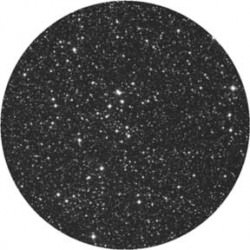 Now drop 2.7 degrees southwest of Alpha (RA 19 23 12 Dec +22 08 00) for yet another open cluster, NGC 6793. Discovered by Herschel in 1789 and logged as catalog object VIII.81, you’ll find a few more bright stars here. The challenge in this cluster is not so much being able to see it in a smaller telescope—but being able to discern a cluster from a star field! Try using the photo to help you distinguish it from the rest…
Now drop 2.7 degrees southwest of Alpha (RA 19 23 12 Dec +22 08 00) for yet another open cluster, NGC 6793. Discovered by Herschel in 1789 and logged as catalog object VIII.81, you’ll find a few more bright stars here. The challenge in this cluster is not so much being able to see it in a smaller telescope—but being able to discern a cluster from a star field! Try using the photo to help you distinguish it from the rest…
Sunday, September 6, 2009 – Today we celebrate many births. In 1891, it’s Yrjo Vaisala who produced telescope optics and discovered asteroids. In 1830, John Henry Dallmeyer, who was a master at making telescopes and eyepieces, was born. Last, in 1811, was James Melville Gilliss who founded the United States Naval Observatory.
Tonight we’ll return again to Vulpecula, but with a different goal in mind. What we’re after requires dark skies yet can be seen in either binoculars or a small telescope. Once you’ve found Alpha, begin about two finger-widths southeast, and right on the galactic equator you’ll find NGC 6823 (RA 19 43 10 Dec +23 17 54.). The first thing you will note is a fairly large, somewhat concentrated magnitude 7 open cluster.
Resolved in larger telescopes, the viewer may note these stars are the hot, blue-white variety. For good reason. NGC 6823 only formed about 2 billion years ago. Although it is some 6,000 light-years away and occupies around 50 light-years of space, it’s sharing the field with something more—a very large emission/reflection nebula, NGC 6820 (RA 19 42 27 Dec +23 05 14).
In the outer reaches of star cluster NGC 6823, new stars are being formed in masses of gas and dust as hot radiation is shed from the brightest of the stellar members of this pair. Fueled by emission, NGC 6820 isn’t always an easy visual object; it is faint and covers almost four times as much area as NGC 6823. But trace the edges very carefully, since the borders are much more illuminated than the central cluster region. Take the time to really observe this one! The processes going on here are very much like those in the ‘‘Trapezium’’ area of the Orion nebula. Be sure to mark your siting in your observing notes. NGC 6823 is Herschel VII.18 and NGC 6820 is also known as Marth 401!
Did you catch last week’s awesome Jupiter events? If not – then enjoy this great footage taken by the one and only Joe Brimacombe. (Not only is Dr. Joe cool… but he’s also one of the best observers I know!)
Perhaps you need another little nudge to get you out and observing, huh? Then here’s a list of Jupiter activities over the weekend:
Friday
- 00:58 UT, Io begins transit of Jupiter.
- 01:28 UT, Io’s shadow begins to cross Jupiter.
- 03:16 UT, Io ends transit of Jupiter.
- 03:48 UT, Io’s shadow leaves Jupiter’s disk.
- 22:10 UT, Io enters occultation behind Jupiter.
Saturday
- 01:00 UT, Io exits eclipse by Jupiter’s shadow.
- 02:36 UT, Europa exits eclipse by Jupiter’s shadow.
- 19:24 UT, Io begins transit of Jupiter.
- 19:58 UT, Io’s shadow begins to cross Jupiter.
- 21:42 UT, Io ends transit of Jupiter.
Sunday
- 16:36 UT, Io enters occultation behind Jupiter.
- 17:06 UT, Europa begins transit of Jupiter.
- 18:14 UT, Europa’s shadow begins to cross Jupiter.
- 18:20 UT, Ganymede enters occultation behind Jupiter.
- 19:28 UT, Io exits eclipse by Jupiter’s shadow.
Now get out there and observe!!
This week’s awesome images are (in order of appearance): Full Moon (credit—NASA), Omicron 1 Cygni, NGC 6800, NGC 6793, NGCs 6823 (central) and 6820 (credit—Palomar Observatory, courtesy of Caltech) and Jupiter footage courtesy of Joe Brimacombe. We thank you so much!


